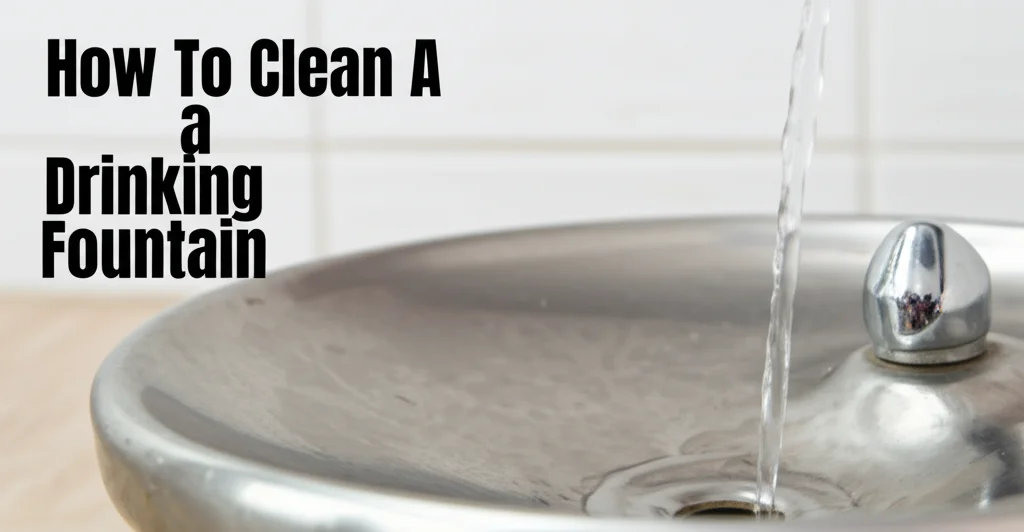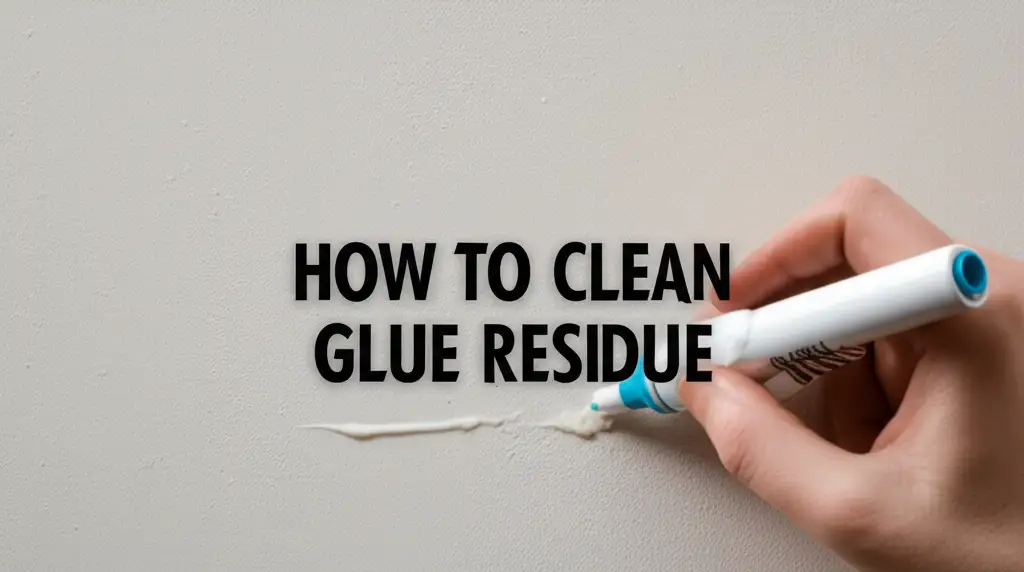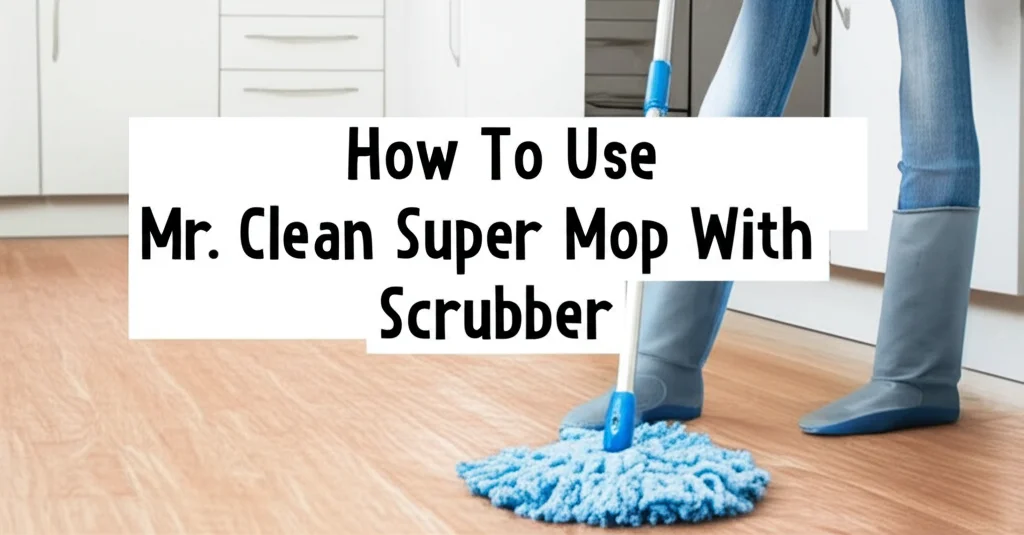· Cleaning Guides · 14 min read
How To Clean A Drinking Fountain

How to Clean a Drinking Fountain: Complete Maintenance Guide
Drinking fountains are essential fixtures in schools, offices, parks, and public spaces, providing convenient access to fresh water. However, these high-touch surfaces can quickly become breeding grounds for bacteria and germs if not properly maintained. Regular cleaning and maintenance of drinking fountains not only ensures hygienic water consumption but also extends the lifespan of these valuable fixtures.
Whether you’re responsible for a stainless steel drinking fountain in a commercial setting or managing water fountains in a school environment, understanding proper cleaning techniques is crucial.
In this comprehensive guide, we’ll walk through everything you need to know about how to clean a drinking fountain effectively, from daily maintenance to deep cleaning procedures.
Key Takeaways:
- Clean drinking fountains daily with mild detergent and disinfect weekly
- Replace filters according to manufacturer recommendations (typically every 3-6 months)
- Address mineral deposits promptly with vinegar solution
- Follow specific procedures for stainless steel maintenance
- Create and follow a regular maintenance schedule
To clean a drinking fountain properly, wipe visible surfaces daily with a mild detergent solution, disinfect weekly with an EPA-approved disinfectant, and address mineral buildup regularly using a vinegar solution. Don’t forget to clean the drain and replace filters as recommended.
Essential Supplies for Drinking Fountain Cleaning
Before diving into the cleaning process, gathering the right supplies will make your task more efficient and effective. Using appropriate cleaning materials ensures you can properly sanitize your drinking fountain without causing damage to its components.
Required Cleaning Supplies:
- Mild, non-abrasive dish soap
- White vinegar (for mineral deposits)
- EPA-approved disinfectant (check that it’s safe for food-contact surfaces)
- Microfiber cloths or soft sponges
- Soft bristle brush (for reaching crevices)
- Gloves
- Bucket
- Spray bottle
- Distilled water (for final rinse)
- Cotton swabs (for small areas)
- Stainless steel cleaner (for stainless steel fountains)
- Protective eyewear (when using strong cleaning solutions)
It’s important to note that harsh chemicals like bleach, ammonia, or abrasive cleaners should be avoided as they can damage the fountain’s finish and components. For most routine cleaning, a simple solution of mild dish soap and water will suffice.
When selecting a disinfectant, look for EPA-registered products specifically approved for use on drinking water equipment. These products are designed to kill harmful microorganisms without leaving residues that could contaminate the water. Remember to always follow the manufacturer’s instructions regarding dilution rates and contact time for maximum effectiveness.
For homes or facilities with hard water, keeping a vinegar solution on hand is essential for addressing mineral buildup that can affect both the appearance and function of your drinking fountain. A simple solution of equal parts white vinegar and water can be used to dissolve calcium and other mineral deposits.
Daily Cleaning Routine for Drinking Fountains
Establishing a consistent daily cleaning routine is the foundation of proper drinking fountain maintenance. Daily cleaning prevents the buildup of germs, bacteria, and visible contaminants that can accumulate on frequently used fountains.
Step-by-Step Daily Cleaning Process:
- Turn off the water supply to the fountain (if possible)
- Prepare a solution of mild dish soap and warm water
- Using a microfiber cloth or soft sponge, wipe down all visible surfaces, including:
- Basin
- Spout
- Activation button/handle
- Surrounding cabinet or housing
- Pay special attention to the spout and activation mechanism, as these are high-touch areas
- Rinse thoroughly with clean water
- Dry all surfaces with a clean microfiber cloth to prevent water spots
- Turn the water supply back on
For busy locations with heavy usage, such as schools or gyms, consider wiping down the drinking fountain’s high-touch surfaces multiple times throughout the day. This intermediate cleaning can be as simple as using a disinfectant wipe on the activation button and spout.
“Regular daily cleaning of drinking fountains is essential for public health and safety,” notes the comprehensive maintenance guide published by cleaning experts.
Remember to check the drain during your daily cleaning routine. Remove any visible debris that could cause clogs and affect the fountain’s drainage. A quick inspection can prevent more significant problems down the line.
Weekly Deep Cleaning and Disinfection
While daily cleaning addresses surface-level contamination, a weekly deep cleaning is necessary to ensure your drinking fountain remains truly sanitary. This more thorough process focuses on disinfection and addressing areas that might be missed during routine cleaning.
Weekly Cleaning Protocol:
- Follow all steps in the daily cleaning routine first
- Apply an EPA-approved disinfectant to all surfaces
- Allow the disinfectant to remain on surfaces for the recommended contact time (usually 5-10 minutes)
- Use a soft bristle brush to clean around the spout, drain, and other hard-to-reach areas
- Thoroughly rinse all surfaces with clean water
- For the drain: pour a mixture of equal parts vinegar and hot water down the drain to clean and deodorize
- Wipe down exterior housing with appropriate cleaner (stainless steel cleaner for stainless steel fountains)
- Dry all surfaces completely
During your weekly cleaning, take time to inspect the fountain for any signs of damage, leaks, or unusual operation. Early detection of problems can prevent more costly repairs later.
For stainless steel drinking fountains, weekly maintenance should include a specific stainless steel cleaning routine to maintain the appearance and integrity of the finish. Apply the stainless steel cleaner in the direction of the grain to avoid scratches and maintain the surface’s appearance.
If your drinking fountain includes a water filter system, check the filter indicator (if present) during your weekly cleaning. While filter replacement typically isn’t needed weekly, regular monitoring ensures you won’t forget this crucial maintenance task.
How to Clean Drinking Fountain Filters
The filter in a drinking fountain plays a crucial role in providing clean, great-tasting water. Regular cleaning and timely replacement of these filters are essential parts of fountain maintenance.
Filter Maintenance Schedule:
- Check manufacturer recommendations for your specific model
- Typically, filters should be replaced every 3-6 months
- More frequent replacement may be necessary in areas with hard water or heavy usage
Filter Cleaning and Replacement Process:
- Turn off the water supply
- Locate the filter housing (usually underneath or behind the fountain)
- Remove the filter according to manufacturer instructions
- For cleanable filters:
- Rinse under cold water to remove loose particles
- Soak in a mixture of water and vinegar for 15-20 minutes
- Rinse thoroughly
- For disposable filters, simply replace with a new one
- Reassemble the filter housing
- Turn the water supply back on
- Run water through the system for 3-5 minutes to flush any air or loose particles
Many modern drinking fountains, especially those from brands like Elkay, include filter status indicators. These helpful tools alert maintenance staff when filter changes are necessary. If your fountain doesn’t include such an indicator, setting calendar reminders for filter maintenance is recommended.
“Understanding how to clean a drinking fountain filter is one of the most overlooked aspects of fountain maintenance,” according to the detailed guide on filter maintenance. “A clean filter not only improves water taste but also protects internal components from sediment damage.”
When ordering replacement filters, always ensure you’re getting the correct model for your specific drinking fountain. Using incorrect filters can result in poor filtration, leaks, or damage to the system.
Addressing Mineral Deposits and Hard Water Stains
One of the most common challenges in maintaining drinking fountains is dealing with mineral deposits and hard water stains. These white, chalky deposits not only detract from the appearance of your fountain but can eventually affect its function.
Identifying Mineral Buildup:
- White or yellowish crusty deposits around the spout
- Reduced water flow
- Uneven water stream
- Chalky residue in the basin
- Water spots that don’t wipe away with regular cleaning
Removing Mineral Deposits:
- Create a solution of equal parts white vinegar and water
- For light buildup:
- Spray the solution on affected areas
- Let sit for 15-20 minutes
- Wipe clean with a soft cloth
- Rinse thoroughly with clean water
- For stubborn deposits:
- Soak paper towels in the vinegar solution
- Apply the soaked towels directly to the affected areas
- Let sit for 1-2 hours
- Scrub gently with a soft brush
- Rinse thoroughly
For extreme cases of mineral buildup, particularly around the spout or internal components, you may need to disassemble these parts for thorough cleaning. Always refer to the manufacturer’s maintenance guide before disassembling any components.
To prevent future mineral buildup, consider implementing a water softening system if your facility has particularly hard water. Additionally, drying the fountain surfaces after periods of heavy use can help prevent the formation of new deposits.
If you’re dealing with particularly stubborn mineral deposits, you might need to repeat the vinegar treatment multiple times or increase the vinegar concentration slightly. Patience is key—harsh scrubbing can damage the fountain’s finish.
Maintaining an effective cleaning routine for all your facility’s fixtures, including drinking fountains, can significantly extend their lifespan and performance.
Specialized Cleaning for Different Fountain Types
Different types of drinking fountains require specific cleaning approaches to maintain their appearance and functionality. Whether you’re dealing with stainless steel, porcelain, or modern bottle-filling stations, understanding the appropriate cleaning methods is essential.
Stainless Steel Drinking Fountains:
- Clean in the direction of the grain
- Use dedicated stainless steel cleaner for exterior surfaces
- Avoid chlorine bleach, which can pit and discolor the surface
- Apply a light coating of food-grade mineral oil to enhance appearance (optional)
Porcelain or Ceramic Fountains:
- Use non-abrasive cleaners to avoid scratching
- For stains, create a paste of baking soda and water
- Apply paste to stains, let sit for 15 minutes, then rinse
- Avoid acidic cleaners that might damage the finish
Bottle-Filling Stations:
- Pay special attention to the bottle-filling nozzle and sensor
- Clean the drip tray thoroughly to prevent mold growth
- Follow manufacturer guidelines for cleaning electronic components
- Use a cotton swab dipped in alcohol to clean sensors
Outdoor Drinking Fountains:
- Check for and remove debris like leaves and twigs regularly
- Use a water-resistant protective coating annually (for non-stainless models)
- In colder climates, follow winterization procedures
- Check for signs of rust or corrosion frequently
For specialized fountains, such as those with refrigeration units or hot water dispensers, always refer to the manufacturer’s cleaning instructions. These units may have additional components that require specific maintenance procedures.
Many modern drinking fountains, like those from Elkay, come with antimicrobial treatments on key surfaces. While these treatments help reduce bacteria growth, they don’t eliminate the need for regular cleaning. The Elkay water fountain cleaning guide provides detailed information on maintaining these specific models.
For ADA-compliant fountains with dual heights, remember to clean both drinking stations thoroughly, even if one appears to be used less frequently than the other.
Creating a Drinking Water Fountain Maintenance Checklist
Developing and implementing a comprehensive maintenance checklist ensures that no aspect of drinking fountain care is overlooked. This systematic approach not only simplifies the cleaning process but also creates accountability and consistency in maintenance procedures.
Daily Maintenance Tasks:
- Wipe down all visible surfaces with mild soap solution
- Clean spout and activation mechanism
- Check water flow and temperature
- Clear drain of visible debris
- Dry all surfaces to prevent water spots
- Visual inspection for any damage or issues
Weekly Maintenance Tasks:
- Complete disinfection of all surfaces
- Deep clean drain with vinegar solution
- Clean hard-to-reach areas with brush
- Check filter status indicator (if applicable)
- Inspect for leaks around connections
- Clean exterior housing with appropriate cleaner
Monthly Maintenance Tasks:
- Descale spout and internal components if needed
- Check water pressure
- Inspect drain for proper function
- Clean aerator (if present)
- Check all mounting hardware
- Test temperature controls (for fountains with cooling)
Quarterly Maintenance Tasks:
- Replace filter (or according to manufacturer schedule)
- Inspect all plumbing connections
- Check refrigeration system (if applicable)
- Lubricate mechanical parts if recommended
- Test and adjust water flow if necessary
Creating a maintenance log that accompanies your checklist can help track when tasks were completed and by whom. This documentation can be particularly valuable for facilities that need to maintain compliance records or for troubleshooting recurring issues.
For larger facilities with multiple drinking fountains, consider creating a master maintenance schedule that rotates through different fountains throughout the week while ensuring all receive appropriate attention.
Remember that your maintenance checklist should be adapted to your specific needs and fountain types. High-traffic areas may require more frequent cleaning, while specialty fountains might need additional maintenance steps.
Troubleshooting Common Drinking Fountain Problems
Even with regular maintenance, drinking fountains can occasionally develop issues that require troubleshooting. Knowing how to address common problems can save time and potentially avoid costly service calls.
Low Water Pressure:
- Check water supply valves to ensure they’re fully open
- Inspect the aerator or flow regulator for clogs
- Test the filter for excessive buildup (replace if necessary)
- Check for kinks in supply lines
- Verify pressure regulator settings
Unusual Taste or Odor:
- Replace the water filter immediately
- Flush the system for 5-10 minutes
- Clean and disinfect the spout thoroughly
- Check for mold or algae growth in hidden areas
- Ensure proper drainage to prevent stagnant water
Leaking Fountain:
- Tighten any loose connections
- Check for cracked or damaged supply lines
- Inspect valve assemblies for wear
- Examine drain components for proper sealing
- Look for cracks in the basin or housing
Water Temperature Issues:
- For refrigerated units, check cooling system operation
- Ensure proper ventilation around cooling components
- Verify thermostat settings
- Allow sufficient recovery time between uses
- Check ambient temperature around the unit
If your troubleshooting efforts don’t resolve the issue, it may be time to consult a professional. For complex fountains like the Elkay ezH2O bottle filling stations, specialized knowledge may be required for repairs. The comprehensive guide on fixing complex plumbing fixtures can provide additional insights for troubleshooting efforts.
Remember that some issues, particularly those involving electrical components or internal plumbing, may require professional service. Always prioritize safety and don’t attempt repairs beyond your skill level.
For facilities with water fountains that see intermittent use, such as seasonal buildings, proper startup and shutdown procedures can prevent many common problems.
FAQ: Common Questions About Drinking Fountain Maintenance
What should I use to clean a drinking water fountain?
For daily cleaning, use a mild dish soap solution with warm water and a soft microfiber cloth. For disinfection, use an EPA-approved disinfectant that’s safe for food-contact surfaces. Avoid harsh chemicals like bleach or ammonia that can damage the fountain’s finish. For stainless steel fountains, use a dedicated stainless steel cleaner for exterior surfaces.
How do I flush a drinking fountain?
To properly flush a drinking fountain, first ensure the drain is unobstructed. Turn the water on to full flow and let it run for 3-5 minutes. For fountains that have been unused for extended periods, flush for at least 10 minutes. After filter replacements, flushing helps remove carbon particles and air from the system.
How often should you clean a water fountain?
High-touch surfaces of drinking fountains should be cleaned daily, with a thorough disinfection performed weekly. Filters typically require replacement every 3-6 months, while deep descaling for mineral deposits should be done monthly or as needed based on your water quality. Creating a maintenance schedule ensures all cleaning tasks are completed at appropriate intervals.
How do you clean and drain a fountain?
To clean and drain a drinking fountain, first turn off the water supply. Clean all surfaces with appropriate cleaners, paying special attention to the spout and basin. For the drain, remove any visible debris and pour a mixture of equal parts vinegar and hot water down the drain. Let it sit for 15-20 minutes before flushing with clean water. For seasonal shutdown, follow manufacturer guidelines for complete drainage.
Why does my drinking fountain water taste metallic?
A metallic taste in drinking fountain water is typically caused by high mineral content in your water supply, aging pipes, a filter that needs replacement, or corrosion in internal components. First, try replacing the filter and flushing the system thoroughly. If the taste persists, inspect for corrosion or consider having your water quality tested. Regular cleaning and filter replacement usually resolve taste issues.
How do I remove black mold from my water fountain?
To remove black mold from a drinking fountain, create a solution of equal parts white vinegar and water. Apply this to affected areas and let sit for 30 minutes. Scrub gently with a soft brush, then rinse thoroughly. Follow with an EPA-approved disinfectant, allowing proper contact time before rinsing again. Improve ventilation and ensure the fountain dries completely between cleanings to prevent future mold growth.
Final Thoughts on Drinking Fountain Maintenance
Maintaining clean, functional drinking fountains is an essential responsibility for facility managers, maintenance staff, and property owners. Regular cleaning not only ensures the health and safety of users but also protects your investment by extending the lifespan of these valuable fixtures. By following the comprehensive cleaning and maintenance procedures outlined in this guide, you can provide safe, refreshing water while avoiding costly repairs and replacements.
Remember that consistency is key when it comes to drinking fountain maintenance. Implementing a structured cleaning schedule with daily, weekly, monthly, and quarterly tasks will help ensure that no aspect of maintenance is overlooked. Taking a proactive approach to cleaning and addressing minor issues before they become major problems will save time and resources in the long run.
For those managing multiple facilities or responsible for numerous drinking fountains, consider providing training to staff on proper cleaning techniques and creating standardized procedures across locations. Proper documentation of maintenance activities can also be valuable for compliance purposes and troubleshooting recurring issues.
As drinking fountain technology continues to evolve, with features like bottle filling stations, filtration systems, and touchless operation becoming more common, staying informed about manufacturer recommendations for these specific models becomes increasingly important. The latest resources on facility maintenance can help you keep up with best practices.
By prioritizing drinking fountain cleanliness and maintenance, you’re making an important contribution to public health and providing a valuable service to those who rely on these fixtures for hydration throughout their day.
- drinking fountain cleaning
- water fountain maintenance
- public health
- sanitation
- cleaning tips




